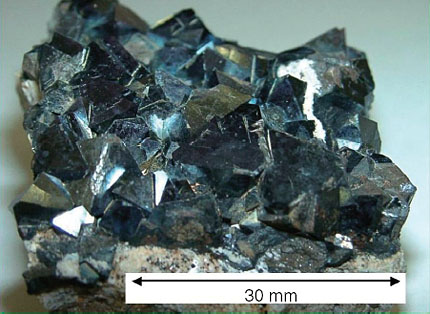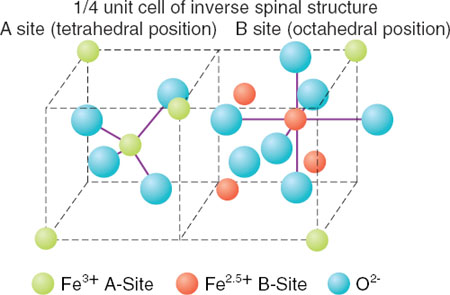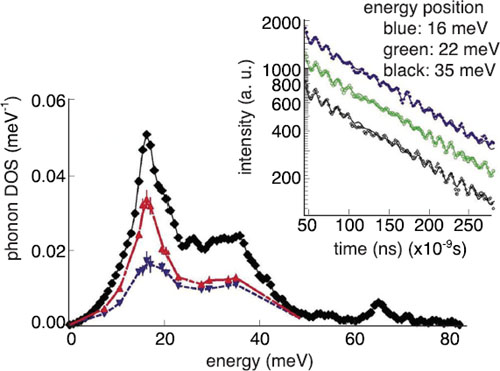5-3 | Site-Specific Lattice Vibration States Observed by Nuclear Resonant Scattering |
 |
||
|
 |
||
|
 |
||
|
|
Magnetite "Fe3O4" exhibits an abrupt decrease in electrical conductivity at low temperature (metal-insulator transition). It is the well-known Verwey transition (Fig. 5-7). Nevertheless, the physical origin of this phenomenon is not yet fully understood in spite of many studies. To explore its origin, it is necessary to examine the temperature dependence of the electronic and lattice vibration (phonon) state of the iron (Fe) atom located in the B site of the inverse spinel structure of Fe3O4 (Fig. 5-8). Inelastic nuclear resonant scattering is a unique technique that can investigate the phonon state of only the atom contributing to nuclear resonant excitation. Spectra are observed by scanning the energy of the synchrotron radiation X-ray energy that enters a sample near the nuclear resonance excitation energy of a specific element. However, it was very difficult to selectively measure the phonon density of states (DOS) of each Fe atom located in the two crystallographically different sites in Fe3O4. To overcome this problem, we observed for the first time the quantum beat patterns of time spectra. These patterns reflect the difference of the electronic states of Fe atoms located in the A and B sites at each energy of the inelastic nuclear resonant scattering spectrum. The phonon DOS of the Fe atom in the B site of Fe3O4 was discerned using the difference in electronic states of the Fe atoms in the A and B sites at room temperature (Fig. 5-9). Our site-specific measurements are a powerful tool for the study of the local phonon states of the Verwey transition of Fe3O4 in the low temperature phase and in other complex materials. |
| Reference M. Seto et al., Site-Specific Phonon Density of States Discerned Using Electronic States, Phys. Rev. Lett., 91(18), 185505 (2003). |
| Select a topic in left column |
|
| Persistent Quest Research Activities 2005 Copyright (C) Japan Atomic Energy Research Institute |